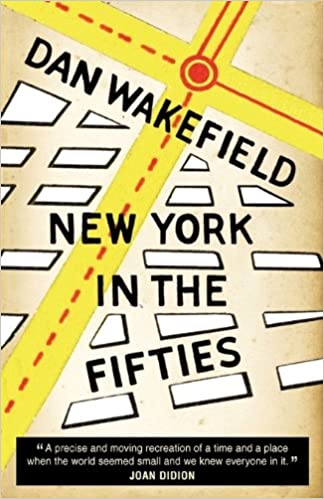
Photograph Source: Lorie Shaull – CC BY 2.0
As the Supreme Court decides whether to strike down Rose v. Wade, I remembered what life was like when abortion was illegal. I wrote about the nightmare experience the outlawing of abortion causes, especially for unmarried young women in New York City in the 1950s. I lived there during that decade and wrote about it my memoir, New York in the Fifties, which I quote from here,
How to Get a “Therapeutic Abortion”
Abortion was illegal, dangerous, expensive, and commonplace in New York in the fifties. It was the nightmare threat, the dark cloud of death that shadowed the freedom of sexual liberation in the days of its first dawn, not just for wild young people who were out for kicks, but starry-eyed romantics who believed they were truly in love and dared to bring their passion to physical completion without the sanction of marriage. It was not just pot-smoking beatnik girls who got pregnant when they weren’t married; it was ‘nice girls’ who graduated from Vassar and Smith, girls as bright, sensitive, and serious as Salinger’s much-beloved Franny Glass.
If, indeed, as many readers guessed, Franny was having a nervous breakdown, then she might have been able to get a legal abortion for psychiatric reasons in the safety of a hospital. Only if a woman’s life was threatened by her pregnancy could she get a ‘therapeutic abortion.’ In the fifties the proportion of legal abortions sanctioned by recommendation of psychiatrists began to rise, and one out of every three  abortions performed at New York City’s Mount Sinai Hospital in 1956 was ‘for reasons of mental health.’ This led to a crackdown by conservative elements of the medical profession who anyway were hostile to psychiatrists, and some hospitals set requirements so severe that a patient had to have demonstrated ‘a convincing intention of suicide’ to qualify for an abortion on grounds of mental health. In order not to risk her life with an illegal abortion in some tenement kitchen, a woman had to convince a hospital board of M.D.’s that she would take her life by her own hand, making the threat credible with details of specific plans: a leap from the Triborough Bridge, an overdose of sleeping pills chased with Scotch, a slice of the wrist with a razor blade.
abortions performed at New York City’s Mount Sinai Hospital in 1956 was ‘for reasons of mental health.’ This led to a crackdown by conservative elements of the medical profession who anyway were hostile to psychiatrists, and some hospitals set requirements so severe that a patient had to have demonstrated ‘a convincing intention of suicide’ to qualify for an abortion on grounds of mental health. In order not to risk her life with an illegal abortion in some tenement kitchen, a woman had to convince a hospital board of M.D.’s that she would take her life by her own hand, making the threat credible with details of specific plans: a leap from the Triborough Bridge, an overdose of sleeping pills chased with Scotch, a slice of the wrist with a razor blade.
I sat in the Limelight coffeehouse off Sheridan Square one night, advising the girlfriend of a guy I knew how to convince a psychiatrist she would really kill herself if she didn’t get a legal abortion. Because I was in analysis, I supposedly knew how and what psychiatrists thought (had I known, I wouldn’t have been in analysis), and how to make them believe your story. Actually, the girl seemed so terrified of going the black-market route of backstairs abortion, I suggested that all she had to do was tell the truth. The trouble was, so many other young women were telling similar stories to psychiatrists all over the city, it was hard to make your own story sound more truly desperate than the others, since psychiatrists couldn’t write too many such recommendations or they’d get a reputation for it and face the possible loss of their license. Getting a psychiatrist’s letter advising a therapeutic abortion in New York then was about as difficult as getting a visa to leave Casablanca in the days when Humphrey Bogart was running Rick’s Cafe.
According to an article called ‘Important Facts About Abortion,’ in the February 1956 issue of Reader’s Digest (hardly the voice of radicalism), ‘If there is any class of patients who do not get a fair hearing when they seek legal abortion–no matter what reasons they may have–its unmarried women whose lives and health may be endangered by pregnancy. Doctors often take a moralistic attitude in these cases, as shown by the remarks of one doctor on a hospital abortion committee: ‘She has had her fun, and she can sweat this one out.’
The article reported that many doctors feared persecution from their own colleagues in approving a therapeutic abortion. A ‘conservative estimate’ by Reader’s Digest of the number of illegal abortions performed in the United States every year at that time was 330,000. A ‘conservative estimate’ by Newsweek in the following decade reported that 5,000 women were killed each year ‘from such complications as bleeding and infections’ caused by illegal abortions.